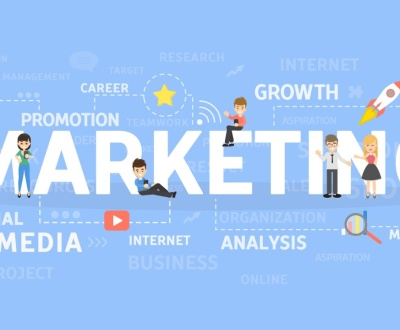Adapting to Change: Navigating the Evolution of Content Marketing for Future Success
- August 31, 2024
- Branding, Business, Digital Marketing
Content marketing has come a long way from its humble beginnings. What started as a way for companies to share valuable information has evolved into a dynamic, multifaceted field that’s central to modern business strategies. If you want to stay ahead of the curve, it’s essential to understand how content marketing has changed and how to adapt to these shifts.
The Early Days: Inform and Educate
Back in the early 2000s, content marketing was all about delivering useful information. Companies relied on blogs, whitepapers, and articles to showcase their expertise and provide real value to their audiences. The goal was straightforward: attract and retain customers by solving their problems.
What Was Key Back Then:
Long-Form Content: In-depth articles and comprehensive guides were the go-to for establishing authority.
SEO Focus: Getting your content to rank well on search engines was crucial for driving traffic.
Email Newsletters: These were used to keep audiences in the loop and nurture leads.
The Social Media Boom: Engage and Connect
The rise of social media in the mid-2000s changed the game. Suddenly, brands had the opportunity to engage with their audience in real-time and on a more personal level. Social media made it easy for content to spread quickly and for brands to build communities around their products.
What Changed:
Short-Form Content: Quick posts and updates became popular for their immediacy.
Visual Appeal: Images, memes, and infographics started to dominate because they were more shareable.
Direct Interaction: Brands began having real conversations with their audiences, fostering stronger connections.
The Content Explosion: Diversify and Personalize
By the 2010s, content marketing had exploded into a variety of formats. Video, podcasts, and interactive content were no longer just optional—they were essential. Personalization became a key focus as data analytics allowed brands to tailor their messages to specific audience segments.
What Was Important:
Video Marketing: Platforms like YouTube and social media video features became critical for engagement.
Podcasts and Webinars: These offered deeper dives into topics and allowed for expert discussions.
Personalization: With data insights, brands could create content that felt more relevant and engaging to their audience.
The Modern Era: AI, Automation, and Experience
Today, content marketing is driven by cutting-edge technology. AI and automation have transformed how content is created, distributed, and optimized. Brands now have the tools to deliver highly personalized experiences and manage content at scale.
What’s Now:
AI Insights: AI helps analyze data to fine-tune content strategies and predict trends.
Automation: Tools streamline content distribution and customer interactions, saving time and resources.
Experiential Content: Augmented reality (AR) and interactive elements offer immersive experiences that captivate users.
How to Stay Ahead of the Curve
I. Embrace New Technologies:
Keep an eye on emerging technologies like AI and AR. These tools can open up new ways to engage your audience and enhance your content strategy.
II. Prioritize Personalization:
Use data to understand your audience’s preferences and deliver tailored content. Personalization boosts engagement and helps build stronger connections.
III. Mix Up Content Formats:
Don’t rely on just one type of content. Incorporate videos, interactive elements, and podcasts to reach different segments of your audience.
IV. Leverage Analytics:
Regularly review how your content is performing. Use this data to refine your strategy and make informed decisions.
V. Focus on User Experience:
Ensure your content is not only engaging but also easy to access and navigate. A good user experience keeps people coming back.
VI. Stay Flexible:
The digital world is always changing. Be ready to adapt your strategy based on new trends, technologies, and audience needs.
Content marketing has evolved significantly, reflecting the broader changes in the digital landscape. From its roots in straightforward information sharing to today’s high-tech, personalized approach, staying ahead means being proactive and adaptable. By understanding these shifts and embracing new tools and strategies, you can keep your content marketing efforts fresh and effective.
About us and this blog
We are a digital marketing company with a focus on helping our customers achieve great results across several key areas.
Request a free quote
We offer professional SEO services that help websites increase their organic search score drastically in order to compete for the highest rankings even when it comes to highly competitive keywords.
Subscribe to our newsletter!
More from our blog
See all postsRecent Posts
- Understanding User Experience (UX) in Digital Marketing December 15, 2024
- How to Create a Social Media Content Calendar: A Step-by-Step Guide November 30, 2024
- Creating a Strong Brand Identity in the Digital Age November 15, 2024












